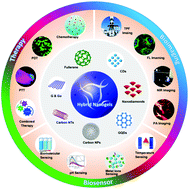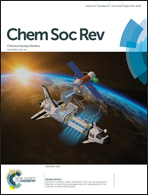Carbon-based hybrid nanogels: a synergistic nanoplatform for combined biosensing, bioimaging, and responsive drug delivery
Abstract
Nanosized crosslinked polymer networks, named as nanogels, are playing an increasingly important role in a diverse range of applications by virtue of their porous structures, large surface area, good biocompatibility and responsiveness to internal and/or external chemico-physical stimuli. Recently, a variety of carbon nanomaterials, such as carbon quantum dots, graphene/graphene oxide nanosheets, fullerenes, carbon nanotubes, and nanodiamonds, have been embedded into responsive polymer nanogels, in order to integrate the unique electro-optical properties of carbon nanomaterials with the merits of nanogels into a single hybrid nanogel system for improvement of their applications in nanomedicine. A vast number of studies have been pursued to explore the applications of carbon-based hybrid nanogels in biomedical areas for biosensing, bioimaging, and smart drug carriers with combinatorial therapies and/or theranostic ability. New synthetic methods and structures have been developed to prepare carbon-based hybrid nanogels with versatile properties and functions. In this review, we summarize the latest developments and applications and address the future perspectives of these carbon-based hybrid nanogels in the biomedical field.

- This article is part of the themed collection: Probes for in vitro and in vivo fluorescence imaging


 Please wait while we load your content...
Please wait while we load your content...